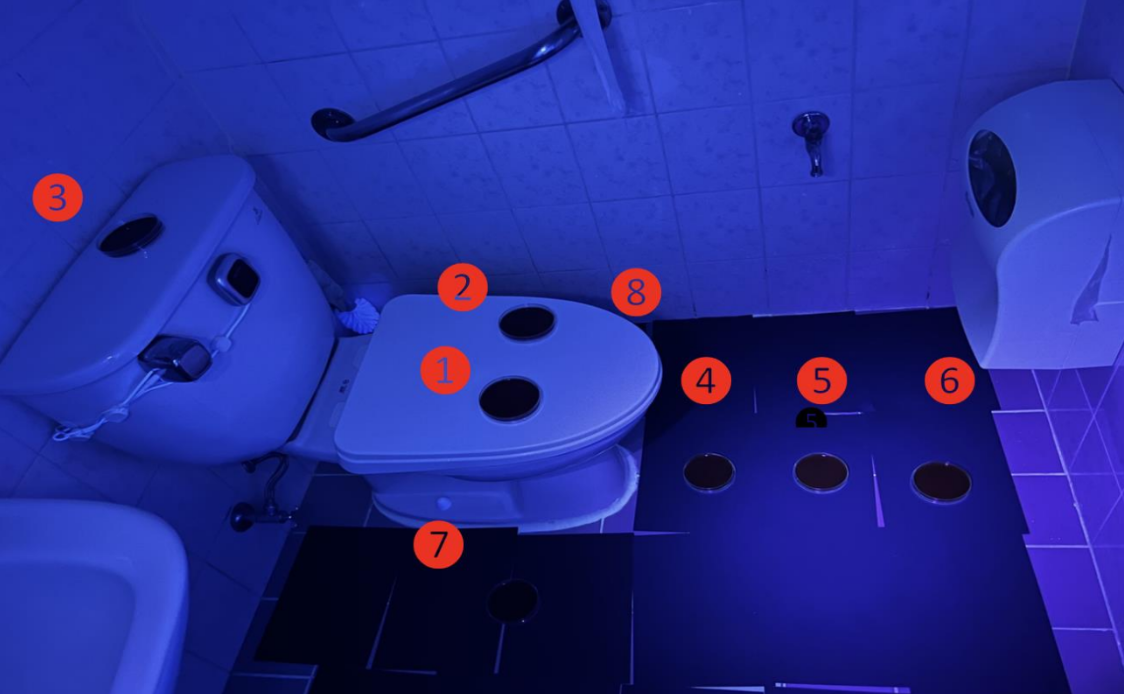Media release
From:
Novel automatic toilet flushing device reduces bacterial contamination on bathroom surfaces
· Open-lid toilet flushing generates microbe-containing aerosols that can spread infectious diseases.
· Researchers find that an automatic flushing device which only operates when the lid is closed expels fewer infectious microorganisms compared to traditional toilet systems.
**Note: the release below is a special early release from the European Congress of Clinical Microbiology and Infectious Diseases (ECCMID 2024, Barcelona, Spain, 27-30 April). Please credit the congress if you use this story**
Researchers have created a new weapon against bacterial contamination and infection in hospitals. The automatic toilet flushing device that only works when the toilet lid is closed expels fewer infectious microorganisms compared to traditional toilet systems, according to new research being presented at this year’s European Congress of Clinical Microbiology and Infectious Diseases (ECCMID 2024) in Barcelona, Spain (27-30 April).
It is well known that the force of a toilet flushing produces thousands of tiny aerosol droplets which can contain urine and faeces as well as infectious microorganisms, and can contaminate floors, walls, sinks, and other surfaces up to five feet away.
Some of the infectious particles produced by a flushing toilet are capable of reaching the lower respiratory tract, which can lead to infection. And if an individual touches a contaminated surface, they can become infected when they touch their nose or mouth.
Previous studies have found that closing the toilet lid can help reduce the spread of bacterial pathogens.
“Human faeces can contain a number of disease-causing bacteria, including E. coli, Staphylococcus, and Campylobacter. Hospital toilets are especially cause for concern for transmitting particles from infected waste”, says lead author Jihye Park from the Asan Medical Center, Seoul, South Korea. “Any potential means of infection control must be applied to keep patients, especially the most vulnerable, as safe and healthy as possible.”
To help tackle this problem, infection preventionists from South Korea developed an automatic toilet flushing device that only operates after the toilet lid has been closed.
To test the device’s effectiveness at reducing contamination on bathroom surfaces, researchers analysed the spread of bacteria particles produced by toilet flushing from toilets fitted with the automatic flushing device compared with toilets without the device.
The analysis was done at a 2,736-bed tertiary care hospital in Seoul, South Korea. A total of eight bathrooms used by patients were selected—four that were fitted with automatic flushing devices (group A) and four without the device (group B).
The researchers placed eight blood agar plates (used to culture microbes and bacteria) in different areas of each bathroom around the toilet—one above the toilet water tank, two on the toilet seat, two on the side of the toilet, and three spaced 15 cm apart in front of the toilet (see figure 1 in notes to editors).
During the experiment, the water was flushed once by the researchers. The water was flushed when the toilets were clean, without any faeces or urine present.
After each toilet was flushed, airborne particles were allowed to settle on the surface of the plates for 90 minutes. They were then collected and incubated for two days. During this time, the plated microbes grew from a colony of one or more cells into a visible colony that could be seen and counted.
Overall, the analyses found that, on average across all the locations, less than half as many bacterial colonies were found on the surfaces surrounding the toilets fitted with the automatic flushing devices compared to toilets without the devices (6 vs 14 colonies).
In particular, significantly fewer bacterial colonies were collected on the left rim of the toilet seat (average 4 vs 10 colonies), a distance of 45 cm in front of the toilet (6 vs 16), and on the left side of the toilet (6 vs 12) in those toilets fitted with the new automatic flushing devices compared to toilets without the devices.
“Our study underscores the importance of closing the lid before flushing and fitting automatic flushing devices to reduce the contamination of bathroom surfaces”, says Park. “We are now going to install automatic flushing devices in all hospital bathrooms along with automatic UV disinfection to reduce the spread of infections.”
**********
This press release is based on poster abstract EW0103 the European Congress of Clinical Microbiology and Infectious Diseases (ECCMID). All accepted abstracts have been extensively peer reviewed by the congress selection committee. There is no full paper at this stage, but the authors are happy to answer your questions. The research has not yet been submitted to a medical journal for publication.



 International
International


